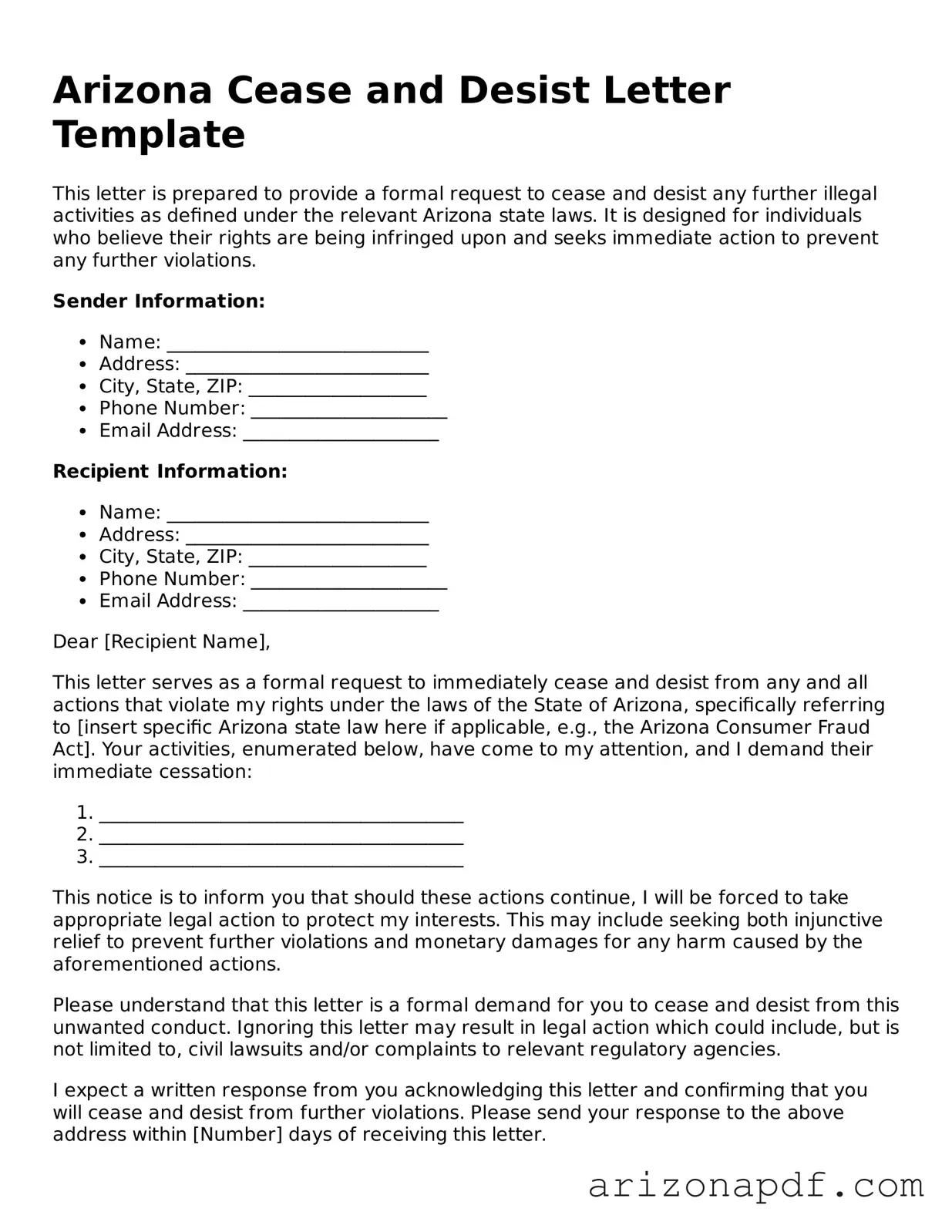What is a Cease and Desist Letter in Arizona?
A Cease and Desist Letter in Arizona is a formal document used to demand that an individual or organization stop a specified illegal or harmful activity. This letter is the first step in legal action, aiming to resolve disputes without going to court. It serves as a warning that legal action may be taken if the behavior does not cease.
When should I use a Cease and Desist Letter?
You should consider using a Cease and Desist Letter when you believe someone is infringing upon your rights or engaging in illegal behavior affecting you, such as copyright or trademark infringement, harassment, or defamation. This letter can be an effective tool to assert your rights and protect your interests without immediate legal proceedings.
What information needs to be included in a Cease and Desist Letter in Arizona?
The letter should clearly identify the sender and the recipient, provide a detailed description of the complaint, state the legal grounds for the complaint, demand that the offending behavior stop, and outline the consequences if the behavior continues, including potential legal action. It should also have a deadline for compliance and be dated and signed by the sender or their attorney.
Do I need a lawyer to send a Cease and Desist Letter in Arizona?
While it's not legally required to have a lawyer to send a Cease and Desist Letter, consulting with an attorney is highly recommended. A lawyer can ensure that the letter accurately reflects the legal situation, uses the correct language to convey the seriousness of the matter, and complies with Arizona law, thus maximizing its effectiveness.
What should I do if I receive a Cease and Desist Letter?
If you receive a Cease and Desist Letter, it is crucial not to ignore it. Review the document carefully, preferably with legal counsel, to understand the claims against you. Then, you can decide whether to comply with the demands, negotiate, or prepare a defense if you believe the claims are unfounded. Prompt and thoughtful action can prevent further legal complications.
Can a Cease and Desist Letter be enforced in Arizona?
While a Cease and Desist Letter itself does not have legal authority and cannot be enforced like a court order, it serves as a formal demand. If the recipient ignores the letter and continues the offending behavior, the sender may pursue legal action, and the letter will be part of the evidence showing that the recipient was warned.
How is a Cease and Desist Letter delivered to the recipient?
For maximum impact and to ensure it is taken seriously, a Cease and Desist Letter should be delivered via certified mail with a return receipt requested. This method provides proof of delivery. Alternatively, delivering the letter through a process server or via courier can also provide a record of receipt.
What are the possible consequences if I ignore a Cease and Desist Letter in Arizona?
Ignoring a Cease and Desist Letter is risky. It may lead to the sender taking legal action against you. If the case goes to court, the fact that you disregarded the letter can negatively impact your defense. The court may see it as evidence of willful misconduct or infringement, potentially resulting in a judgment against you.
Can I send a Cease and Desist Letter to someone in another state?
Yes, you can send a Cease and Desist Letter to someone in another state if the issue involves federal law or if the behavior has an impact across state lines. However, it's important to be aware that legal requirements and the effectiveness of such a letter can vary between states. Consulting with an attorney who understands the relevant state laws can provide guidance on the best course of action.
